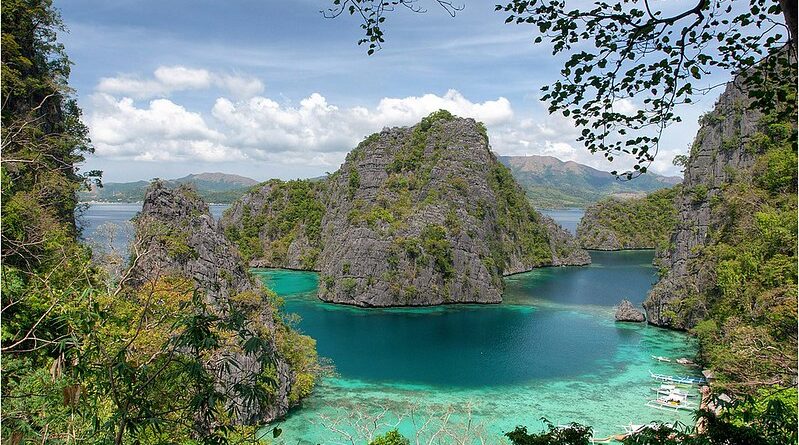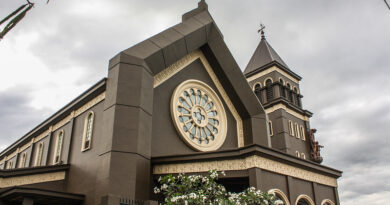How The Pandemic has Affected Tourism in the Philippines
The coronavirus pandemic took the entire world by storm in 2020. It was something that no one could have ever predicted. A year ago, no one could have imagined that unemployment rates would be this high. Certainly, hospitals never thought that they would have to turn away patients in need due to overcapacity.
Life as we knew it is no more. In the interest of public health, states in all of the world’s continents have imposed lockdowns and quarantine measures to make sure that people stay in place and the virus does not spread. As a result, tons of businesses have closed and many industries have been negatively affected. Among these industries include the tourism industry.

Photo Credit : Wikipedia
TOURISM IN THE PHILIPPINES
Tourism is a very important sector in a country like the Philippines. In 2019, it made up almost 13% of the country’s total Gross Domestic Product or GDP. With so many beautiful landscapes to offer to visitors, it is no wonder why. The Philippines is a perfect vacation destination, and it has banked on that fact for many, many years.
The Philippines is home to majestic sights such as the UNESCO World Heritage Sites of the Banaue Rice Terraces, the Tubbataha Reefs, and the Puerto Princesa Subterranean River. On every island and every nook and cranny of this country, there is a different culture. With each one, there are many unique cuisines to try along with it. There are also beaches that are to die for and has given birth to tourist hotspots such as Cebu, Boracay, Siargao, and Palawan.
In the Philippines, entire towns have been built to facilitate tourism. As of 2015, at least five (5) million people were employed in its tourism sector. That number proves to be just enough to entertain the more than six (6) million foreign tourists that the Philippines accepts each year. How are all of these people faring now that tourism has come to a halt?

Photo Credit: Rappler (Lisa Marie David)
IN RESPONSE TO THE PANDEMIC
The Philippines has a population of over 100 million people. Although known the world over as a country that produces a lot of the high quality and well-educated nurses that are serving in hospitals abroad, the Philippines itself has a shortage of health professionals. It is estimated that there is only one (1) doctor for every 33,000 people here. Evidently, a widespread medical emergency was something that the country could not risk.
With twenty (20) cases of coronavirus infections confirmed on March 9, 2020, President Rodrigo Duterte declared a state of public health emergency in the Philippines. A week later on March 15, a lockdown was imposed. All kinds of travel were suspended, and people were urged to stay at home.

Photo Credit : Rappler (Ben Nabong)
EFFECTS ON TOURISM
There are two months left before the end of 2020, and all of the areas in the Philippines are still observing varying degrees of quarantine measures. The lockdown that was imposed in the country has been dubbed as the world’s longest and strictest lockdown. For the first few months, it was as though the entire country was put on pause. A couple of industries have since restarted, but there are still some that are taking a little longer to recover than the others.
While flights all over the Philippines are now operating at a limited capacity, foreign nationals—except for a select few—remain forbidden to enter for tourism. Domestic travel has restarted, but it is still subject to a number of restrictions. With no visitors coming in, restaurants, hotels, and other establishments in the tourism industry have had to adapt and adjust to the situation. There were tough decisions made, and the results were not always that pretty.

Photo Credit: UsNews
HOW THE INDUSTRY IS COPING
In a survey that was conducted in cooperation with the Philippines’ Department of Tourism (DOT), major players in the tourism industry revealed that they knew from the very start that the coronavirus was going to greatly affect their businesses. Not being identified as ‘essential’, it was clear that the tourism sector was going to be subjected to more restrictions than others. It was also clear that the obstacles posed by these were going to be coupled with low demands for their services.
At the start of the pandemic, these business owners opted to temporarily stop offering their services and/or products. They reduced their levels of operations as well as their employee headcount. Although this strategy has kept many afloat over the past few months, some were not as lucky and have since closed down.
In order to cope, restaurants that have remained open began to offer delivery services to the homes of their customers. For a time, they were only allowed to operate at a limited capacity. Now, they are free to serve their clients at whatever time of the day.
Hotels today have become less like the luxury destinations they once were. Many of those still operating have been converted into quarantine facilities for the time being, serving returning Filipinos and other permitted travelers as they await the results of their swab tests and the release of their clearances to proceed.

Photo Credit: Travel Daily Media
LOOKING FORWARD
The past few months have been hard on everyone. They have been especially hard for travelers and those working in the tourism sector, but it was not time lost. It was a time that was used to think about what the future holds. It was and is a time spent preparing.
We all know now that the threat of the coronavirus is grave and real. It is still very present, and will most likely linger on in the next few months and years. However, the threat of climate change and global warming remains worrying. As such, both travelers and travel-related companies are taking these factors into consideration while looking forward to the future of travel.
This pandemic is not the first that the world has seen. There had been others before. Though it took years before it completely disappeared, it is not absolutely permanent. Climate change, on the other hand, is the defining issue of our time. It is something that we have all contributed to in one way or another. And yes, tourism played a major part in aggravating the situation.
In 2017, an initiative known as sustainable tourism was introduced. It has been a thing even before the coronavirus and all of the complications that came along with it reared its ugly head. Hotels have since been making conscious efforts to reduce their carbon emissions and contribute to the environment. All the while, innovators been hard at work in thinking of ways that can make travel more sustainable and environmentally friendly.
This sustainable tourism movement brought about the rise of alternative forms of travel experiences such as ‘glamping’ or a form of camping that comes with amenities and comforts that do not usually go with the traditional concept of camping. For rich biodiverse nations that rely heavily on eco-tourism, glamping resorts look like the future of travel in a post-pandemic world. Thankfully, the Philippines already has a handful of glamping resorts that are more than ready to operate once tourism fully opens again.
In the popular tourist destination of Palawan, there are glamping resorts in the province’s San Vicente Town. This place gives guests unlimited access to mountains, beaches, and the sea while also keeping them safe in their own purposefully decorated and meticulously sanitized glamping resort units. It is a glamping resort on paper, but it is more of a safe haven to experience nature in all of its beauty.
CONCLUSION
The coronavirus pandemic was unexpected, but the negative effects that it gave rise to were not an accident. The resultant unemployment rates, business closures, and public health crises that we all saw were born out of a disproportion in priorities and the misuse of the resources that we have.
While the pandemic has brought tourism and traveling in itself to a halt, this is not the end for hotels, resorts, and tour companies. This is just a stepping stone to what travel should be. Travel was never meant to be the cash cow it became. It was meant to open eyes and take people back to simpler and more relaxing times.
It will be a while before we can all freely travel to and within the Philippines again. It will take some time, but it is not going to take forever. Think of this pandemic as a break. That is how the Philippines’ tourism sector is looking at it right now. It may not be open as of the moment, but when it reopens, it will be better than over.
Do not cross out that dream Philippine vacation you have been eyeing for so long. Hold on to it because it will surely happen one day. When it does, opt for a glamping resort somewhere quiet and calm. Vacations are for unwinding, and where better to do that than in one of the Philippines’ best beaches?

